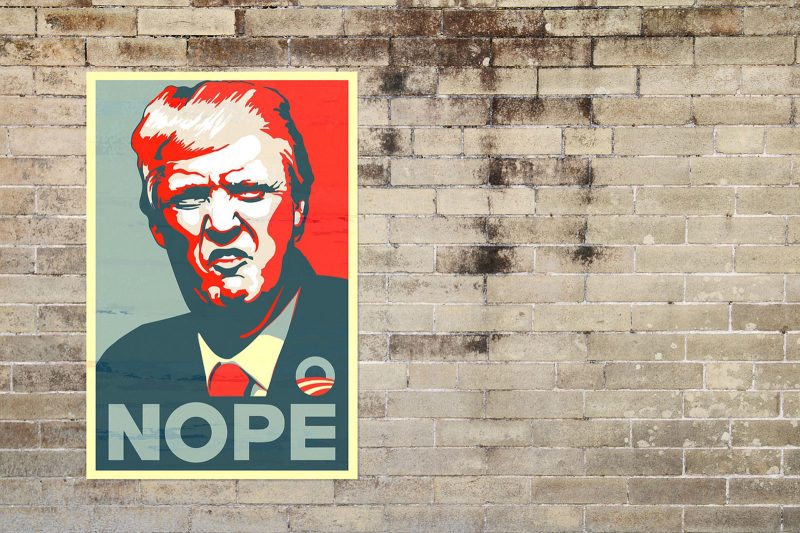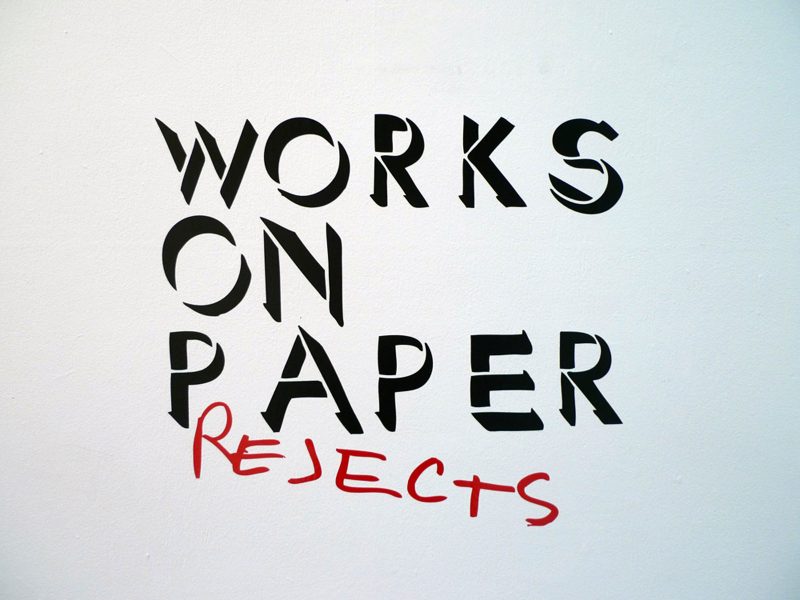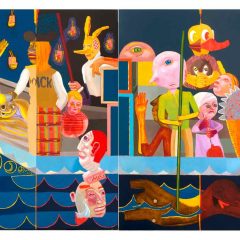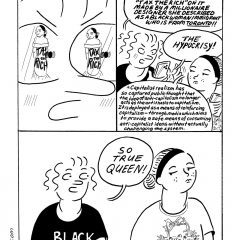Q. Political artwork is all the rage right now. Should I keep making the work I want to make, or should I tailor my work to follow the trend?
A quick refresher y’all. Back in 2016, our country celebrated our democratic ideals by selecting (actually, the Electoral College selecting) a total idiot to be president. Since then, decency has been set aflame, up has been down, and we’ve been slowly dying while struggling to follow our daily news cycle.
In a moment where the political stakes seem life or death, political content has developed a ravenous audience. Artists, meanwhile, are perpetually stuck between following their creative ideals, and building a critical audience for their work. This asker wonders, should the audience dictate one’s creative path?


But let’s say you can get into some great show if you just chase the trend, so you’re gonna do it. I’ll share wisdom from an artist whose lecture I admired greatly for their honesty. This lecturer shared an early body of work, based around the act of knitting – a surprise to see, because it was so different from the artists’ current work. But the artist was making a point for us art students. The knit works were one of a few bodies of work this artist was developing, but due to a mix of positive critical reception and a gallery that demanded what was working, the artist got “stuck” making that body of work for a decade. The assumption is that artists drive the artwork, but often we don’t discuss how a market can dictate the work. One exception is exhibitions that raise money for a cause, where context can protect an artist from expectation. Making one bat-themed work for a bat conservation fundraiser won’t lock you into a bat-based career. But it’s something you should consider. If you chase a trend, are you comfortable building a house there?
My anecdotes suggest no, do not alter your creative practice just to hop on this political moment. The promise of an audience is appealing, but creative professionals in a creative field are keen on separating the authentic from the fake. Sometimes we miss, and artists can certainly make a splash with trendy new works, but it’s also possible to become the artist that does “that thing only.”
All that said, artists, especially, should not automatically dismiss the latest trends. While I do believe this dire political moment will pass, it is also inspiring so many new candidates to run for political office. These individual candidates are responding to the political trend by committing to participate in and help fix our broken political system. I for one, commend their crusade.
Chasing a trend just for audience is foolish. But trends also introduce new ideas into the mainstream conversation. Artists have always been inventors, explorers, adventurers courting innovative ideas that drive our society forward. It is the artist’s job to stay open to the world. Thus, it is up to you to gauge the depth of your enthusiasm, and determine if your interest is fleeting or authentic. If the latter, more power to you, and please invite me to your 2020 election exhibition. As the Chinese proverb goes, “The best time to plant a tree was 20 years ago. The second best time is now.”
Got a question for Dave Kyu (or Beth Heinly, our other art life advisor)? Email ask@theartblog.org. Or, visit our Google form online. See all our Ask Artblog advice columns here.









